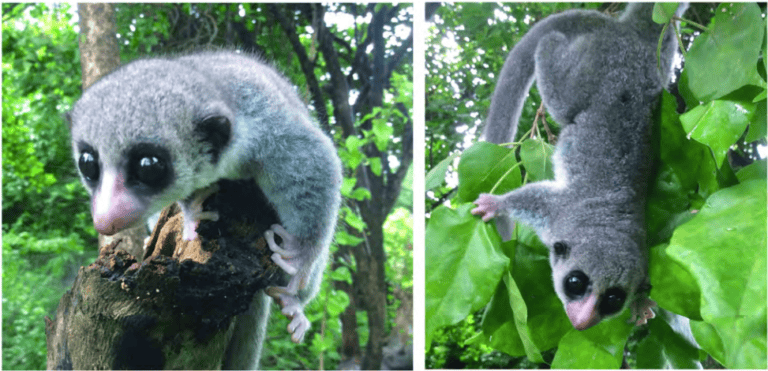- The lemur's body is only about 16 to 17 centimeters long, with an additional 16 centimeters long tail, making it one of the smallest lemurs in its genus Cheirogaleus.
- The lemur has a grey body and a white underbelly, and its tiny hands and feet are lightly colored.
- It is separated from other species of dwarf lemurs both genetically, and geographically, the authors say.
In the forests of northern Madagascar, scientists have discovered a new species of dwarf lemur.
The newly described Ankarana or Sheth’s dwarf lemur is tiny, weighing just over 100 grams. Its body is only about 16 to 17 centimeters long, with an additional 16 centimeters long tail, making it one of the smallest lemurs in its genus Cheirogaleus.
The lemur has a grey body and a white underbelly, and its tiny hands and feet are lightly colored, the researchers report in a recent study published in the journal Primate Conservation.
The researchers have named the new dwarf lemur Cheirogaleus shethi after Brian Sheth, the Chair of the Board of the NGO Global Wildlife Conservation.
“Brian is deeply committed to biodiversity conservation worldwide, and is a leading philanthropist for species and ecosystem conservation,” the authors write in the paper. “He has supported many projects in Madagascar, including research and the establishment and management of nature reserves. His passion and drive to help save the diversity of life on our planet has been an inspiration to all around him.”

The lemur was first identified in 2014, but researchers have only just confirmed it as a distinct species by analyzing its DNA. The new lemur is separated from other species of dwarf lemurs both genetically, and geographically, the authors say.
So far, the Ankarana or Sheth’s dwarf lemur is known only from northern Madagascar, along the forest corridor from Ankarana Special Reserve east to the Analamerana Special Reserve, down to the Bekaraoka forest in the Loky-Manambato Protected Area. Much of this corridor lies within Madagascar’s system of protected areas, the researchers say, and effective management of the protected areas is essential to maintaining connectivity between different populations of the dwarf lemur.
The scientists are yet to determine its population and conservation status.
“Additional fieldwork is necessary to establish baseline data on population density and the extent of the range to determine to which IUCN Red List category this species belongs,” the authors write.
The researchers add that like the Sheth’s dwarf lemur, several other dwarf lemurs likely remain to be described.
Citation:
- Cynthia L. Frasier et al. 2016. A New Species of Dwarf Lemur (Cheirogaleidae: Cheirogaleus medius Group) from the Ankarana and Andrafiamena-Andavakoera Massifs, Madagascar. Primate Conservation 30: 59-72.
FEEDBACK: Use this form to send a message to the author of this post. If you want to post a public comment, you can do that at the bottom of the page.
